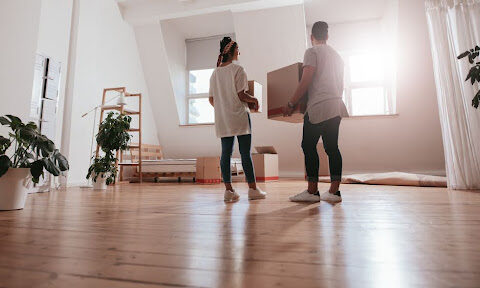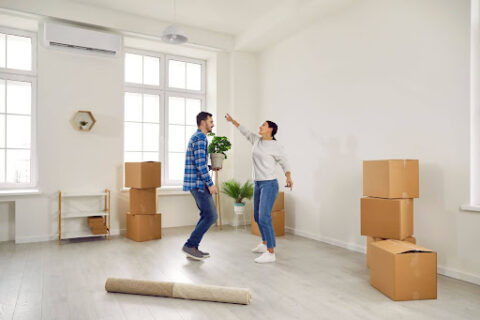Unfortunately, many homeowners reach this point in their move and assume that the most conscientious work is done. This shift in attitude could leave your new home or your belongings with serious moving-day damage.
In this blog, we discuss six methods you can use to protect your new home as you are moving in.
- Choose Professional Movers
While accidents can happen to anyone, much of the property damage that occurs during the move-in process happens as result of inexperience or improper item handling. Movers who work on projects like yours every day know the common threats to your new home and can act accordingly.
Partnering with professional movers ensures that any potential risks to your property that you may not think of are accounted for. Additionally, the lifting and carrying methods used by professional moving teams reduce the risk of dropped items, clipped corners and other chips, scratches and scrapes that often occur during DIY moves.
- Clean Before Unloading
One of the largest challenges surrounding a move is the need to crash after the heightened emotion and extra stressors of the transition process. While a little bit of dirt probably won’t physically damage your home, dirty surroundings could make your new home feel unwelcoming.
Take time to sweep, dust and spray for pests before you begin moving in items in when you arrive at your new home. This step allows you to relax in a clean, cozy atmosphere after the moving truck drives away.
- Consider the Layout of Your New Home
As you think about your move, and if you’re moving in yourself, create a plan for getting the most difficult items to their permanent locations within the house. Pay particular attention to large objects with sharp corners, like appliances.
Look at all possible entry routes, and come up with solutions to protect the walls and flooring in that area. If you’re working with professionals, they’ll handle the problem solving and protection for you. Remember to consider even unconventional routes. For example, sometimes the best way to get bedroom furniture to a second-floor master bedroom is through a large window rather than up the narrow stairs.
Before you actually arrive at your new home, check that you have all the equipment you’ll need to execute your planned routes, including floor coverings as we’ll discuss in the next section.
- Invest in Floor Coverings
Perhaps the most vulnerable element of a new home during move-in is the flooring. Whether you have carpet, hardwood, tile or some combination thereof, you should invest in floor coverings to protect the surface from stains, scratches and other forms of damage. If you’ve already invested in professional movers, they’ll handle this step for you.
For carpet flooring, cardboard can typically provide enough protection. Drop cloths and plastic sheeting can also help preserve your carpet, but you should be sure to check for loose corners and other tripping hazards. For hard flooring types, lay down plywood or plastic film to reduce the risk of scratches.
In addition to these interior floor coverings, find high-quality porch mats for every entrance that movers will use. Encourage every member of your household and moving party to thoroughly clean his or her shoes before going inside, especially if the area has had recent precipitation.
- Keep Kids and Pets Out of the High-Traffic Areas
In addition to planning the most efficient routes into the house as we discussed in section three, you should also endeavor to keep these routes clear during the unloading process. Not only can children and pets be injured in high-traffic areas, but damage-causing accidents can also occur.
For example, a distressed or hurt animal may be more likely to scratch up carpet, and a careless or startled child could spill something onto the floor. If possible, occupy your children and kennel your pets outside of the home for the duration of the unloading process.
If you do not have an alternative place to send kids or pets, consider creating a designated play area that can be easily separated from the rest of the house. Provide snacks and entertainment to ensure that the most vulnerable members of your family stay safe and your new home does, too.
- Perform Fundamental Safety Checks
In addition to the risks posed by moving in furnishings and other belongings, newly moved-in homes are often at high risk of theft due to lax security like generic locks, insufficient outdoor lighting or inadequate alarm systems.
Have a security professional assess your home and change your locks as soon as possible after you move in to make your home a less appealing target for would-be thieves or vandals.
Use these guidelines to ensure that your home is welcoming, beautiful and intact when you settle in and begin to enjoy living in it.


